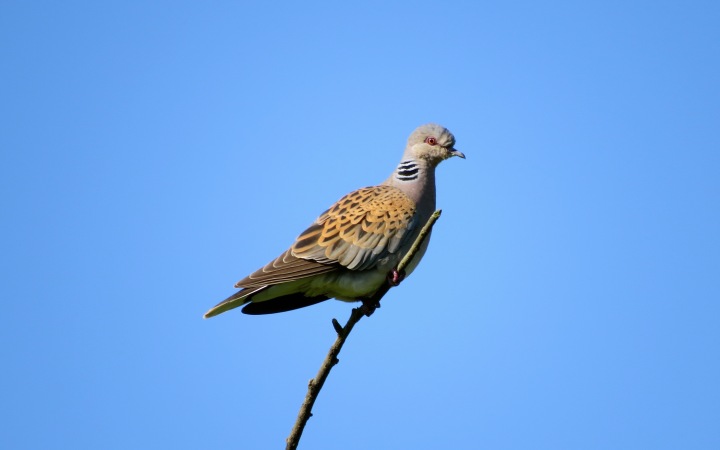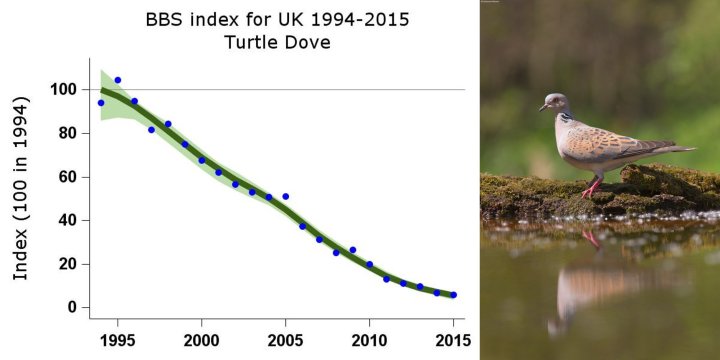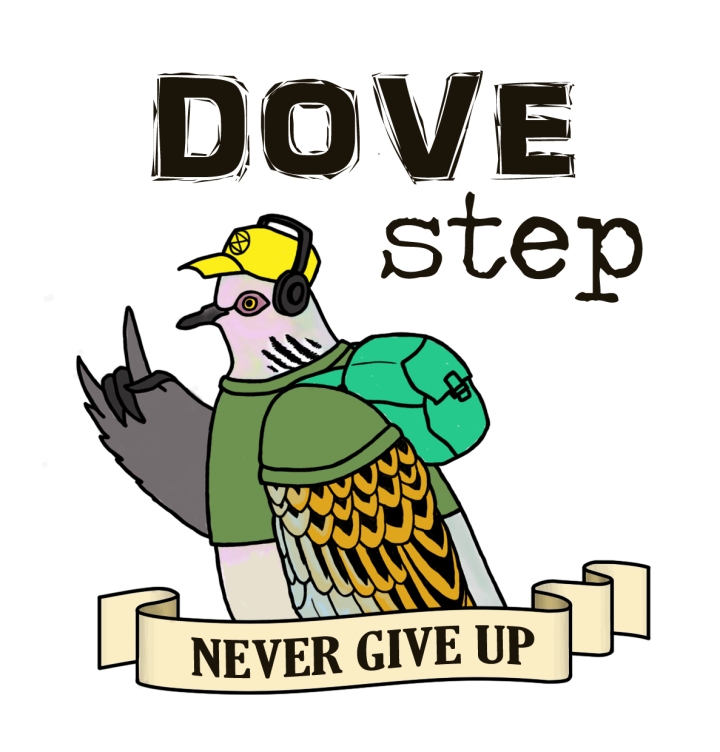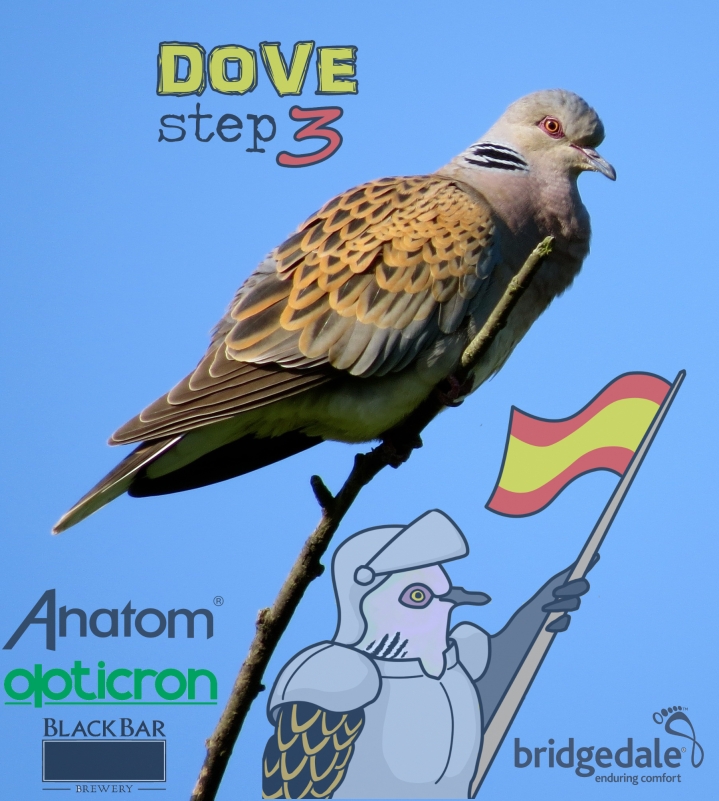A possibly unhealthy pastime of mine is keeping pace with the latest population figures coming out of the Breeding Bird Survey (BBS) data as compiled by the British Trust of Ornithology (BTO). I participate in the Breeding Bird Survey and eagerly anticipate the annual report – a chance to celebrate species on the up and often, more tellingly, species on the down. Whilst I am eternally optimistic, my favourite species – the Turtle Dove, has consistently been on the down.
I always hope a new year’s data will bring a new lease of life to our summering Turtle Doves; I should be happy for a 1% increase in numbers – anything that was suggestive of a flattening out of the concerted decline in numbers across my lifetime. I enjoy perusing the data year-on-year when it is published. I have grown used to encountering the mixed fortunes of our breeding birds, but increasingly I dread coming across Turtle Dove in the associated summary and tables. In 2014 Turtle Dove was one of 32 declining species; between 1995 and 2013 Turtle Dove have exhibited a long-term decline of 91% in breeding numbers. Focusing in further on the East of England – the core region for breeding Turtle Doves – comprised of; Bedfordshire, Cambridgeshire, Essex, Hertfordshire, Norfolk and Suffolk, Turtle Doves have declined by a staggering 92%. 
Given the percentages involved in the 2014 data it is fair to day I approached the 2015 BBS Report with some trepidation. Opening the report, my worst fears were quickly met and a sickly, dread feeling came over me; the national decline of 91% was eclipsed by 93%. These results reinforce the 2015 announcement which added Turtle Dove to the IUCN Red list as vulnerable to the threat of extinction.
The figure of 93% leaves me with a constant black cloud, a nagging sad feeling which seems to manifest itself both physically and mentally. Repeating upon me like a questionable Friday night curry, sometimes promoting teary-eyed melancholy, while at other times latent anger that I cannot manifest into a productive outburst. Who is to blame? Humans, my kinsmen, farmers, hunters – both legal and illegal? Our reckless hedgerow removal and intensified farming practice or the increasing demands upon wintering habitat in sub-Saharan Africa? Is it modernity at large that excludes Turtle Doves or is it a symptom of man’s wanton greed in seemingly all respects; food, the material, land ownership and sport? The questions spiral in my mind and I am unable to pin-point a target for my distress, blame and rage.
As before and across previous journeys I feel the Dove Step campaign, a creature of my creation, albeit not without considerable help from friends, seems the best conduit for my emotions. A positive and precision focused output that gleams in front of me – beyond the murk of emotion, confusion and excuses around our declining breeding birds, farmland birds, migratory birds and especially our Turtle Doves. 
Through the Dove Step campaign, we have directly supported Operation Turtle Dove from its inception with both fundraising and awareness raising. A cycle of endurance, fundraising, public speaking, podcasts and magazine coverage means we have raised over £8 500 for the RSPB in support of Operation Turtle Dove and also covered over 1000 miles, connecting the north-east of England with the Spanish border in the process. The applied application of funds raised has allowed for nine hectares of habitat creation in the East of England and a research expedition by RSPB scientists to Turtle Dove wintering grounds. This applied, tangible application of our fundraising makes it very easy to continue.
In fact, figures such as 93% decline make it essential we continue.
Through the first Dove Step journey we covered much of the English breeding range and the east coast; during the second Dove Step, we commenced our mimicry of the migratory route, connecting the Suffolk coast to the Spanish border – via the whole of France. We are now whole-heartedly training towards the third journey; a complete crossing of Spain from south to north very early next Spring. In crossing Spain, we shall compete at least 25 miles a day walking and well in excess of 700 miles in just 31 planned days. Preparations are daily and concerted; already this year we have walked hundreds of training miles, spent days in the mountains, run multi-day marathon events and started preparing detailed expedition plans for our journey.
Living Dove Step each day is our response to maddening declines, to the feeling that we are grasping at answers and pleading for solutions. If Dove Step 3 can help halt the year-on-year decline of which we keep having to read in the BBS report, then every bit of effort will have been worth it. I should even settle for a levelling off. After all, there are not many more % left to go until we no longer have breeding Turtle Doves to report! 
– Ends –
Read the 2015 BBS report via the BTO website; https://www.bto.org/volunteer-surveys/bbs/bbs-publications/bbs-reports
Follow preparation for and execution of Dove Step 3 via the website; https://dovestep3.wordpress.com
Support Dove Step 3 fundraising via the JustGiving Page; https://www.justgiving.com/fundraising/DoveStep3
Learn about Operation Turtle Dove and partners via their website; http://www.operationturtledove.org
Contact Jonny Rankin for email or spoken interview on the Dove Step campaign; @jonny09jonny / http://www.jonnyrankin.co.uk

